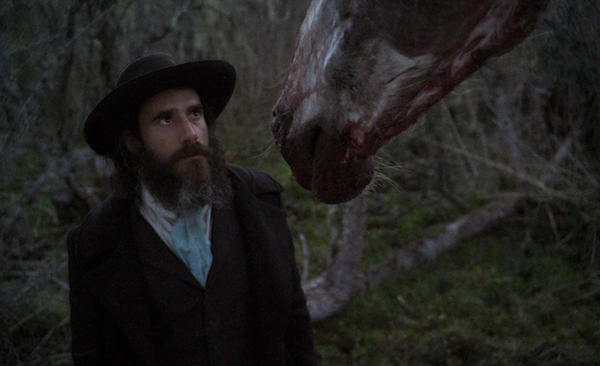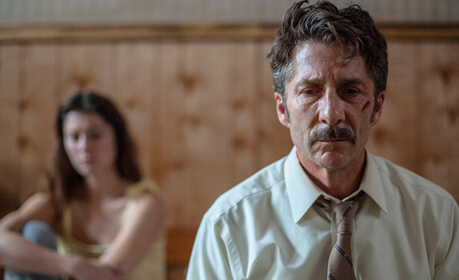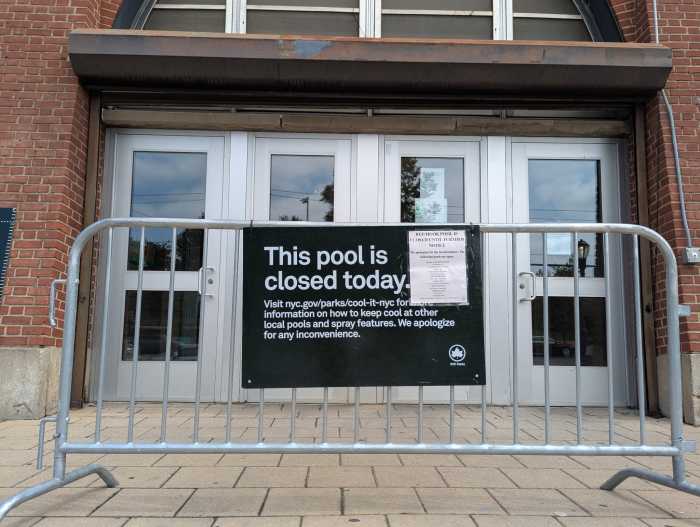Bingham Bryant in Ricky D’Ambrose’s “Notes on an Appearance.” | COURTESY OF RICKY AMBROSE
The multi-national co-production credits for films in this year’s “New Directors/ New Films” series say a lot about its reach: Sri Lanka/ United Kingdom/ USA, Iran/ Canada/ Qatar, Dominican Republic/ Brazil/ Argentina. In the five years since long-time Film Society of Lincoln Center programmer Richard Peña quit that organization, the New York Film Festival has largely abandoned exploring the world of cinema outside the US and Europe. Its younger sibling “New Directors/ New Films,” whose rules limit inclusion to directors who have made only one or two feature-length films, continues to search beyond those narrow boundaries, this year including three films each from Asia and Latin America and one from Algeria.
Even in the US, the programmers did not just grab popular choices from Sundance. Two of the three American films included in this year’s festival are documentaries by black directors.
Among the selections I wasn’t able to preview, the ones with the most advance buzz are Gustav Möller’s “The Guilty,” a minimalist Danish thriller whose action mostly takes place on a phone call, Hu Bo’s “An Elephant Sitting Still,” a four-hour film whose 29-year-old director committed suicide during post-production last fall and that the program notes call a masterpiece and “sure to be remembered as a landmark in Chinese cinema,” and RaMell Ross’ “Hale County This Morning, This Evening,” a politically pointed doc about African-American families in rural Alabama that was filmed over five years and attempts to break down stereotypes about black life.
“New Directors/ New Films” maintains the global reach NYFF abandoned years ago
Ricky D’Ambrose’s hour-long “Notes on an Appearance” (Apr. 6, 6:30 p.m., Walter Reade Theater; Apr. 7, 6:30 p.m., Museum of Modern Art) shows a world of literary references and constant travel, based in a Brooklyn made to look like a suburb of Paris’ Left Bank that’s getting gentrified out of existence if it’s intended to resemble the real New York at all. D’Ambrose fulfills the promise of shorts like his 2016 “Spiral Jetty,” while sticking to its aesthetic. He only moves the camera during fake “home videos.” He constantly uses text — maps, books, newspaper clips — as real images and voice-over and off-screen dialogue as expressive sound, not just as the means to tell a story.
As a filmmaker, he owes a lot to Robert Bresson (he cast Bingham Bryant, an extremely talented director in his own right but not a professional actor, as the film’s lead for its first third), the French New Wave, and Michelangelo Antonioni (the initial importance of the Bryant character’s disappearance but D’Ambrose’s eventual apathy about resolving it recalls “L’Avventura”). Still, “Notes on an Appearance” feels both thoroughly Europhile and a film that could only have been made in contemporary New York, especially in its allusive but unmissable references to the perilous class and political constructs under which we now live. D’Ambrose builds on his earlier work while suggesting a larger and more ambitious vision. This film is intellectually challenging in a way that even Woody Allen's best work set in a similar New York milieu has only hinted at truly being.
To bring the program up to feature length, “Notes On An Appearance” plays with French director Clément Pinteaux’s 17-minute short “Young Girls Vanish.” It begins with information about 58 girls being brutally killed between 1653 and 1657 in Gateais, France, with their murders blamed on a wolf. The use of maps and onscreen text does suggest ties to D’Ambrose’s film, but Pinteaux sinks into empty portent and hints of menace that go nowhere. “Young Girls Vanish” makes vague attempts to comment on the persistence of present-day violence against women, but it really has nothing to say or, more importantly, show.
Iranian-Canadian director Sadaf Foroughi’s “Ava” (Mar. 29, 8:30 p.m., Museum of Modern Art; Apr. 1, 7:30 p.m., Walter Reade Theater) takes an approach to the coming-of-age tale that might appeal to fans of “Lady Bird,” although she goes more for intense drama than moments of comic relief. However, the influence of North American and European films about teenagers is apparent in her approach to female rebellion: the final shot may refer to a famous image in Ingmar Bergman’s “Summer With Monika.”
Mahour Jabbari in Sadaf Foroughi’s “Ava.” | COURTESY OF GRASSHOPPER FILM
Fouroughi has her own distinct voice, though. She often uses shallow focus that leaves Ava (Mahour Jabbari) blurred into the background. Her emphasis on melodrama and lack of grounding in the documentary realism that powered much ‘90s Iranian cinema, especially art films about youth, suggests the influence of Asghar Farhadi. Yet “Ava” deals with specifically female subjects like the implications of pregnancy for young women. As Ava explores the limits of what she can get away with, her mother (Bahar Noohian) is reminded of her own teen years and the beginnings of her marriage. Despite the film’s main interest in Ava, it ultimately reveals itself as a multi-generational portrait of an Iranian family.
Khalik Allah’s “Black Mother” (Apr. 4, 6 p.m., Museum of Modern Art; Apr. 7, 6 p.m., Walter Reade Theater) is a formally brilliant non-fiction depiction of Jamaica, where the director’s mother was born. Mixing Super-8 film with slicker video, it divorces audio statements from Jamaicans and interviews conducted by Allah (including with his grandfather) from the images of their subjects, instead offering a visual panorama of urban and rural life in the country. Despite beginning with a few sex workers, religion is primarily on the film’s mind, particularly Jamaica’s indigenous Rastafarianism (popularized through reggae), and its take is quite positive.
Religion is the primary interest in Khalik Allah’s film about Jamaica, “Black Mother.” | COURTESY OF KHALIK ALLAH
But Allah never addresses an elephant in the room. While someone remarks that Jamaica is the country in the world with the most churches, it’s also been called the planet’s most homophobic country, and both conventional Christianity and Rastas have undeniably contributed greatly to this. Allah shows the positive aspects of Rasta ideology and culture, such as anti-colonialism, an emphasis on knowing Jamaica’s racist history, and healthy eating, but apart from the inclusion of one Rasta’s anti-Asian rant, he largely romanticizes the religion.
The men he talks to emphasize how they want women to follow black beauty standards instead of bleaching their skin and straightening their hair. The film’s engagement with sex workers is mighty shallow; instead, it offers up a view of women as Earth mothers on a pedestal. While it’s full of images of physically damaged men missing arms or eyes or suffering from huge goiters, almost every woman it shows is pretty. “Black Mother” hints vaguely at exploring the Madonna/ whore complex but instead succumbs to it, only in a way that’s well-intentioned and superficially positive
NEW DIRECTORS/ NEW FILMS | Film Society of Lincoln Center, Walter Reade Theater, 165 W. 65th St. | Museum of Modern Art, 11 W. 53rd St. | Mar. 28-Apr. 8 | newdirectors.org




































